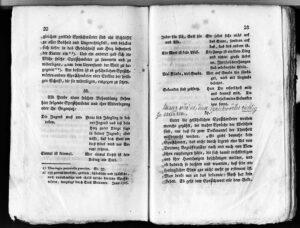Clear Off the Dust – Spring has Sprung!
April 4, 2023 | Posted in: Ken Macro | PGSF Blogs
Happy Spring! Didn’t think it would ever get here.
Of course, with Spring…comes Spring Cleaning. And for me, it means cleaning and dusting off my collection of old books. Now by old books, I mean “Old”.
A Collector of Books
I collect really old books. I have over one hundred books that were printed in the early 1500s till the early 1800s (and a couple of late 1800s as well). Each spring I methodically pull the books from the shelves, dust the shelves and the books themselves, and then I flip through every page of each book to check for insect damage or mildew and, to inspect the bindings. I am always enamored but the quality of print and the quality of detail that each of the printers and bookbinders placed in the production and manufacturing of these works of art.
I am also enamored with watching movies that are filmed in old castles and mansions that show off the vast libraries of such estates. For me, when I am on a tour in such a place, I flock to the library and ask the tour guide if I can pull some books from the shelves for review. Usually, dumbfounded, they stutter and say, “I don’t think that it is allowed.” I generally smile, nod my head, and stare into the abyss as I imagine myself amongst the books one evening by myself, alone with such magnificence.
Page Turning History of Collecting
Book collection has been “a thing” for at least 2000 years. As you may know (or not), in the ancient village of Herculaneum (Pompeii), the uncovered a personal library of ancient manuscripts (codex) in roll form buried (yet persevered) amongst the ashes of Mt. Vesuvius that erupted in 79 AD. Whether one was rich or poor, possessing a book (one or thousands) was a way to capture and possess knowledge and learn accordingly.
In early modern Europe, women were often refrained from collecting books, unless they contained religious content such as prayers, hymns, and biblical stories. Research today, however, has revealed that there were quite a few women book collectors in the early seventeenth century. One known woman book collector whose collected volumes have been distributed throughout twenty-five identified institutions and now, rightfully acknowledged, is Frances Wolfreston (1608-1677). As Ms. Wolfreston would have been inhibited from placing an actual book plate in the books that she owned, she did place inscriptions and marks in the outer pages of books that she acquired—also known as marginalia. As such, it was customary for book collectors in the early years to erase marks and clean the edges of books that were to go on sales to the public (a practice that changed early in the 1800s, thankfully). Over the years, however, book collectors began to look at marks (erased, or redacted) and discover notes, most specifically to books that Ms. Wolfreston owned, and determine their provenance.
Marginalia, by Women
According to historian Georgianna Ziegler, “While some women, like men, wrote their names on a title page, or later used stamps or bookplates, many women wrote their names on inside pages, in the margin, or at the end of books.” Additionally, women owners of books would have most likely used their husband’s names and would therefore not be recognized within the categorization of books later acquired by collectors or other institutions. As it turns out, through the interests of historians of Georgianna Ziegler and others, there is much to discover in this interesting historical topic. Curators and book historians alike are delving deeper into the analysis of book provenance and ownership from the perspective of the women who lived in the times of the publications. What they are learning is intriguing and provides further insight into what women were reading, thinking, writing, exploring, and perhaps influencing, in these enlightening times. I, too, when conducting my spring ritual cleaning of books, look at every page and wonder who owned this book, touched this book, flipped the pages, and took in the knowledge contained there within.
I look forward to spring each year so that I can, once again, spend time with my book collection and discover things new and enlightening—and further my imagination in the wonderment of provenance. It is always beneficial to brush off the dust and begin anew just as I can image Frances Wolfrestron doing in her parlor with some tea each evening as she prepared for bed.
Welcome Spring and dust off a few books. It will ignite your imagination and spark wonderful memories.
Here is to a delightful Spring!
Ken Macro
Professor of Graphic Communication, Cal Poly
PGSF Board Member













